1lumen selects and reviews products personally. We may earn affiliate commissions through our links, which help support our testing.
NEXTORCH T20L review

Nextorch T20L specifications
| Brand/model | NEXTORCH T20L |
|---|---|
| LED | LEP Class 3B |
| Lumens | 900 lm |
| Beam intensity | 1,000,000 cd / 2000 meter |
| Battery config. | 1*21700 |
| Material | Aluminum |
| Modes | 3 |
| Blinkies | Strobe, SOS |
| Reflector | N/A |
| Waterproof | IPX7 |
| Review date | November 2021 |
Introduction:
NEXTORCH isn’t new to building LEP flashlights. This is our 4th NEXTORCH LEP review to be precise. And although not so very popular in the flashlight community, NEXTORCH builds some really nice, and high quality flashlights. And all of the reviewers who have reviewed a NEXTORCH flashlight can confirm this.
The T20L is a nicely built, high-output LEP flashlight. It’s actually quite amazing to see an LEP flashlight claiming 900 lumens. And I can affirm this not to be an exaggeration, even before we dive into the review.
Package quality.
The T20L was shipped in its original retail packaging, meant to be displayed in a store. On the outside, you get all the details about this flashlight, including the output numbers, throw numbers, but also a laser, class 3B warning.
- The flashlight: NEXTORCH T20L
- NEXTORCH 21700 battery with 4800mAh, loaded in the light
- Lanyard
- O-ring
- Manual (in 5 languages)
- Proprietary USB charging cable
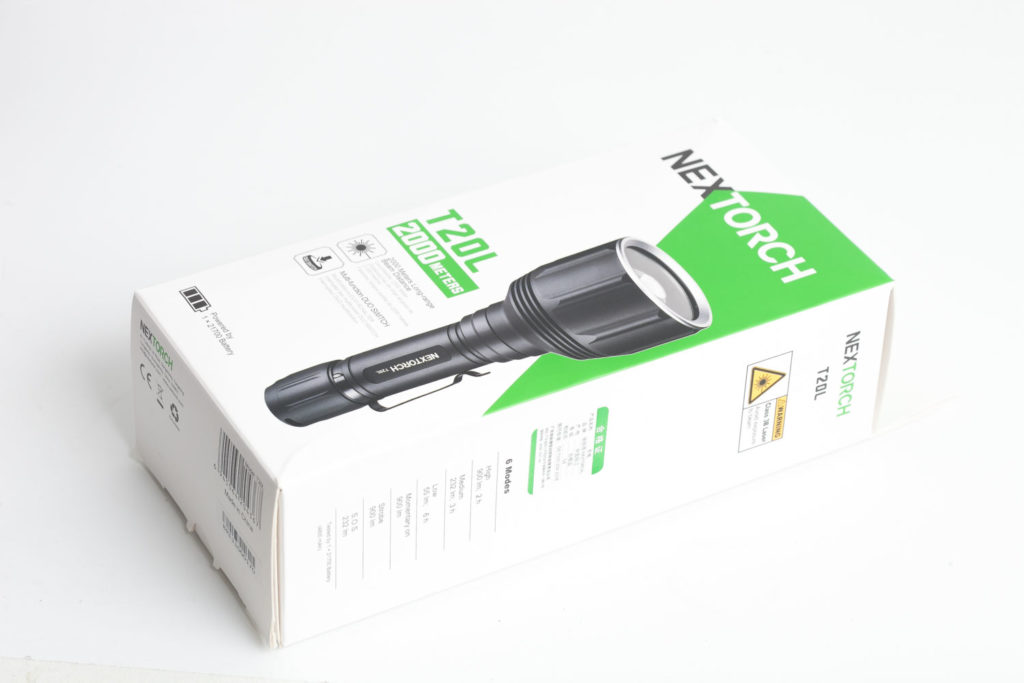
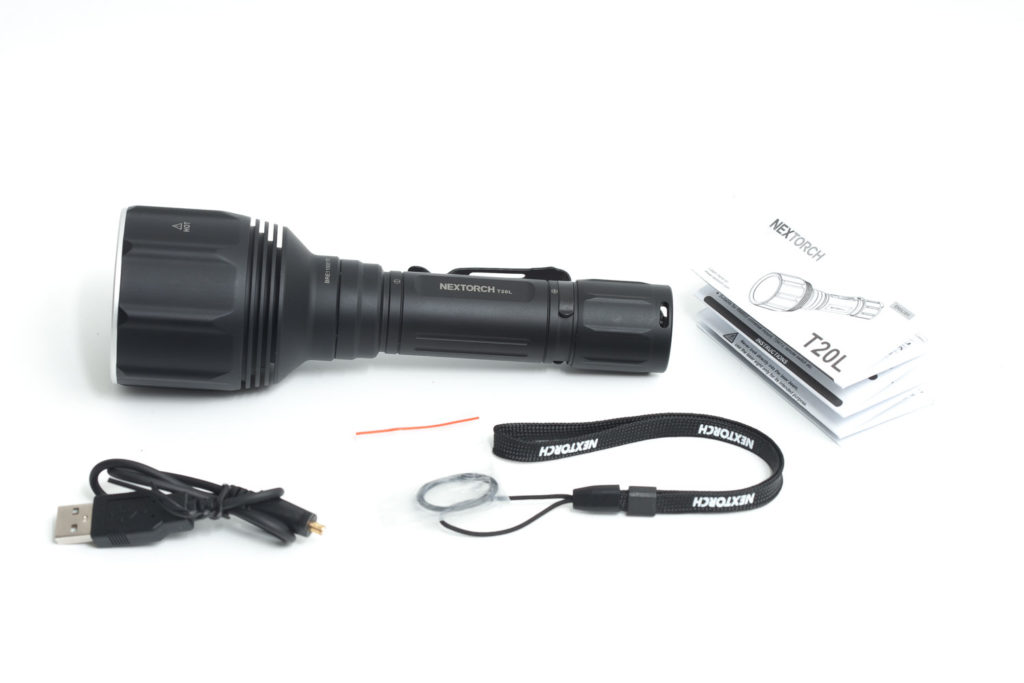
Flashlight in use
Don’t be fooled by the switch. If you’re into flashlights for a long time, you know the difference between a forward clicky switch and reverse clicky switch. The traditional forward clicky switch can’t change modes unless you de-activate the switch again (full click). You then have to tap the switch (not click) to change modes, and full click when you reached the desired output.
After my attempt to measure amps, I couldn’t change modes anymore like you normally do with a forward clicky switch. It was only High and strobe. I then realized this is not your typical forward clicky switch.. dumb… Because the switch has the ability to change modes while activated. It’s behaving like a reverse clicky switch while activated, and a forward clicky switch when turned off.. yes.. my brains couldn’t comprehend that for a while. So keep that in mind when you use the T20L.
There’s only 1 switch, located at the tailcap which is shrouded except for 1 place, where you can easily rest your thumb on the switch. And yes, that’s pretty practical. And the cut-out is small enough to make the light still tail stand.
Although the body and tailcap are missing knurling or reeding, the matte finish helps to keep a grip. And if you are afraid of dropping the light (which isn’t very likely to happen) you can always use a lanyard or a the pocket clip.
The pocket clip is detachable without any tools. It snaps right under the tailcap.
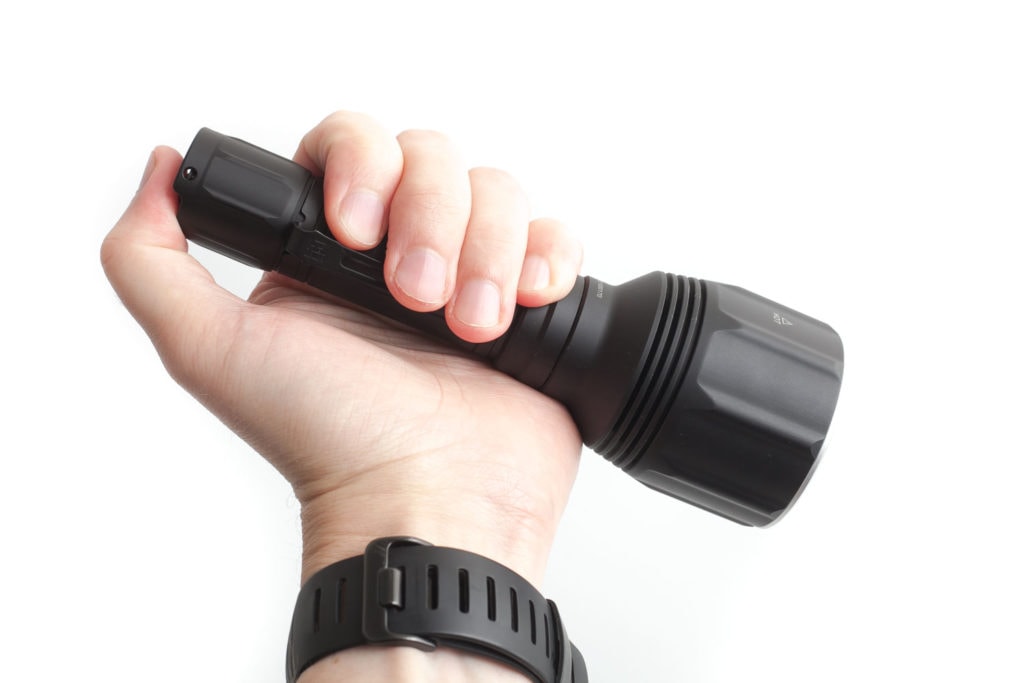
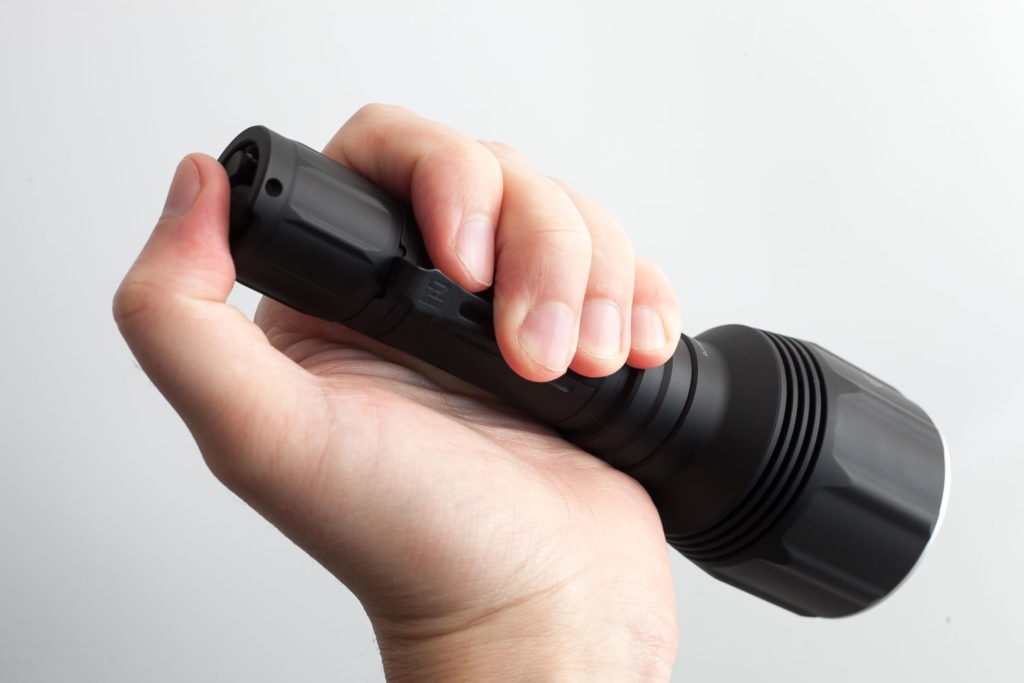
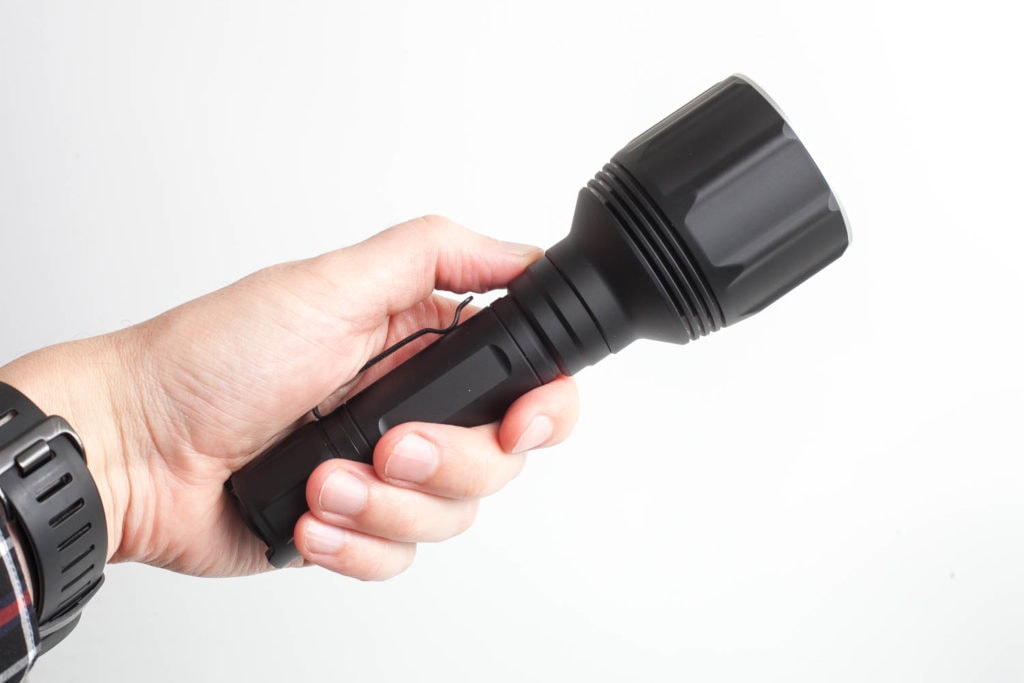
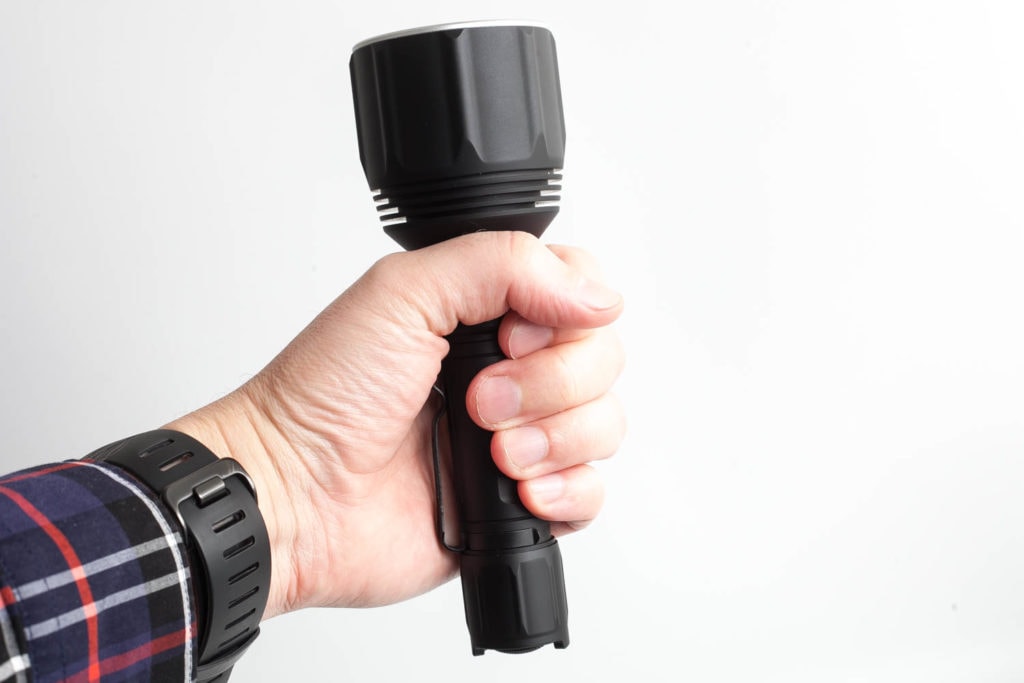
Build Quality, and Warranty
You don’t hear many flashlight enthusiasts talk about NEXTORCH on social media, and that’s a shame. Their build quality is really top-notch, and they perform pretty well. The reason is probably that their lights typically don’t reach the end of a spectrum: read: highest lumens, best throw, best pocket rocket etc.
I even found NEXTORCH flashlights at one of the local hardware stores in the Netherlands, so they sure are a big company, with a large user base. They just don’t have a large fan base. That’s a difference.
Anodization is done well on all parts of the flashlight. The treads are bare aluminum and there’s a single o-ring protecting the flashlight from water entering in.
The tailcap also has a charge port, which should be covered by a piece of rubber that is attached to the rubber switch boot. Unfortunately, mine doesn’t stay inside the charging port so that’s not protecting it as it is supposed to.
If anything fails or causes issues, this is what NEXTORCH has to say about warranty:
NEXTORCH® warrants our products to be free from any defects in workmanship and/or materials. Within 15 days since the date of purchase, if they are predicated to be defective at our discretion, we guarantee to replace them. NEXTORCH ® reserves the right to replace an obsolete product with a current production.
NEXTORCH® provides free maintenance service for products with quality problems under normal use within 5 years since the purchase date. But the quality problems does not include lamp burning out, batteries draining, switches wearing out and damages resulting from abnormal use, abuse, neglect, battery damage, use of other than NEXTORCH® brand batteries or accessories, unauthorized modifications or repairs from their original state.
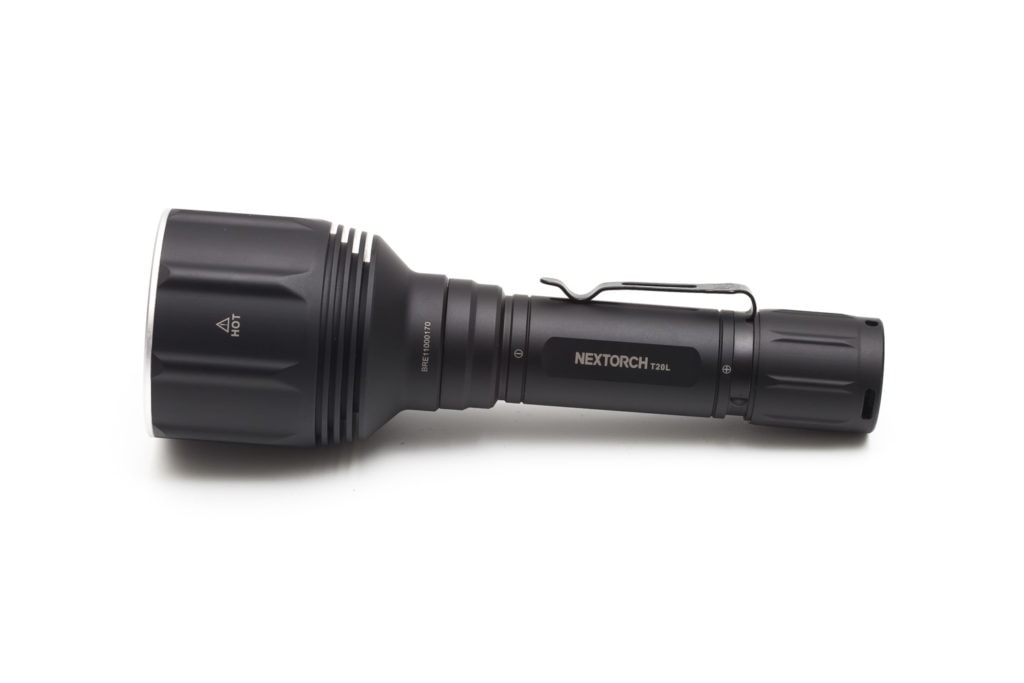
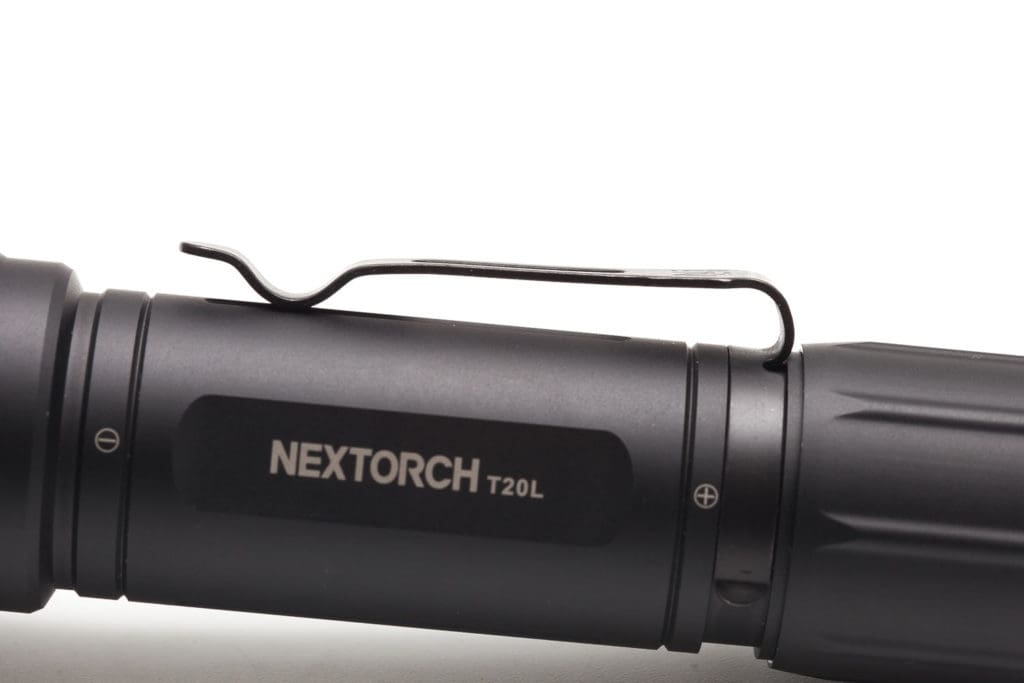
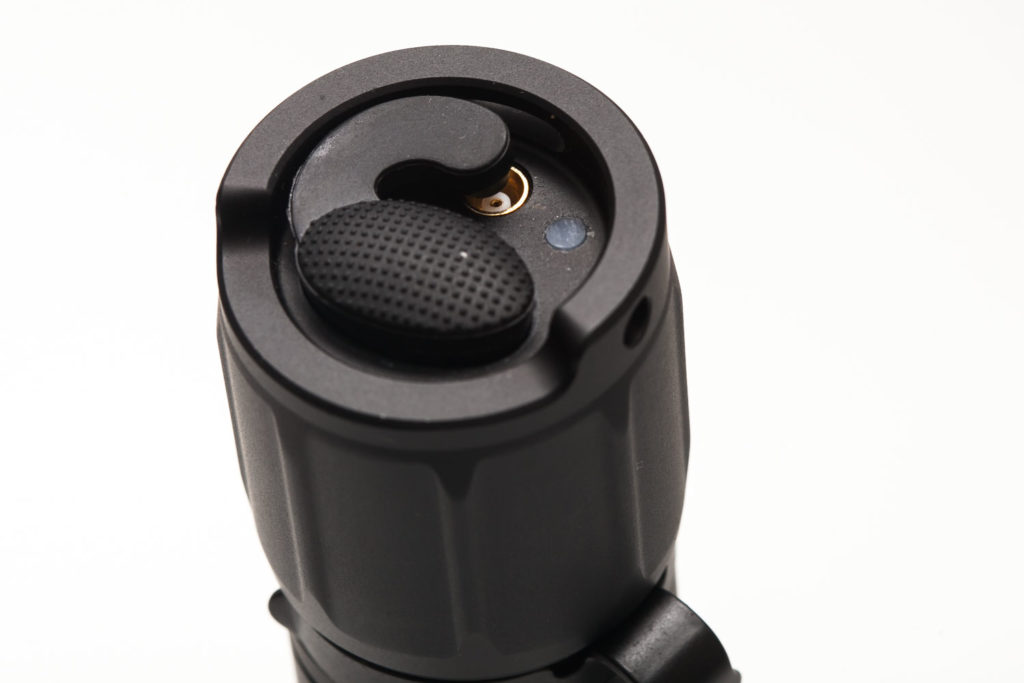
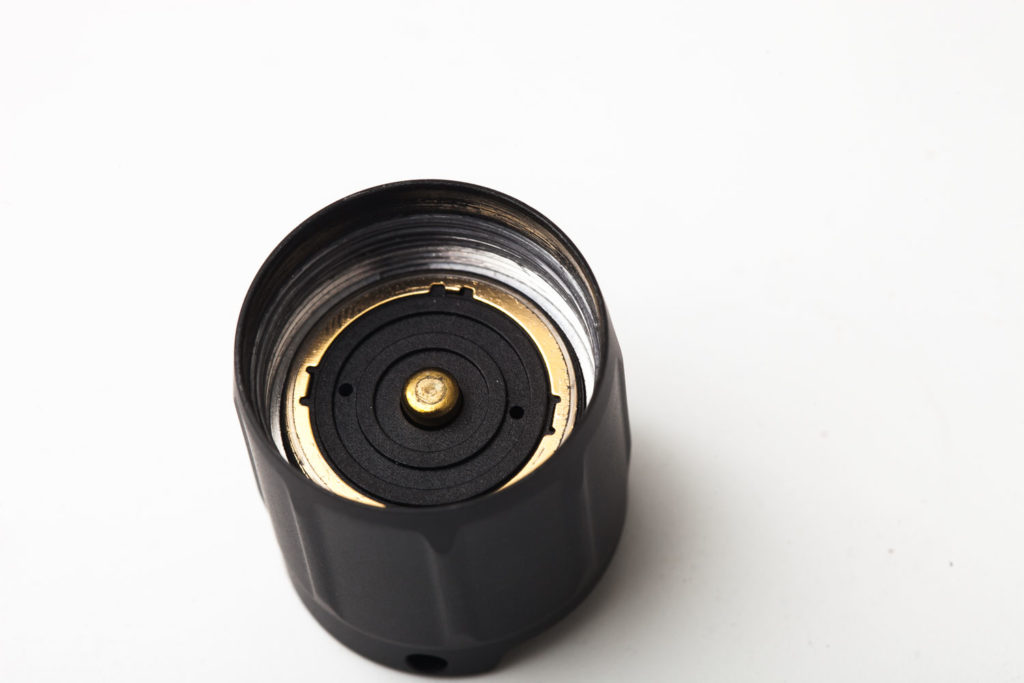
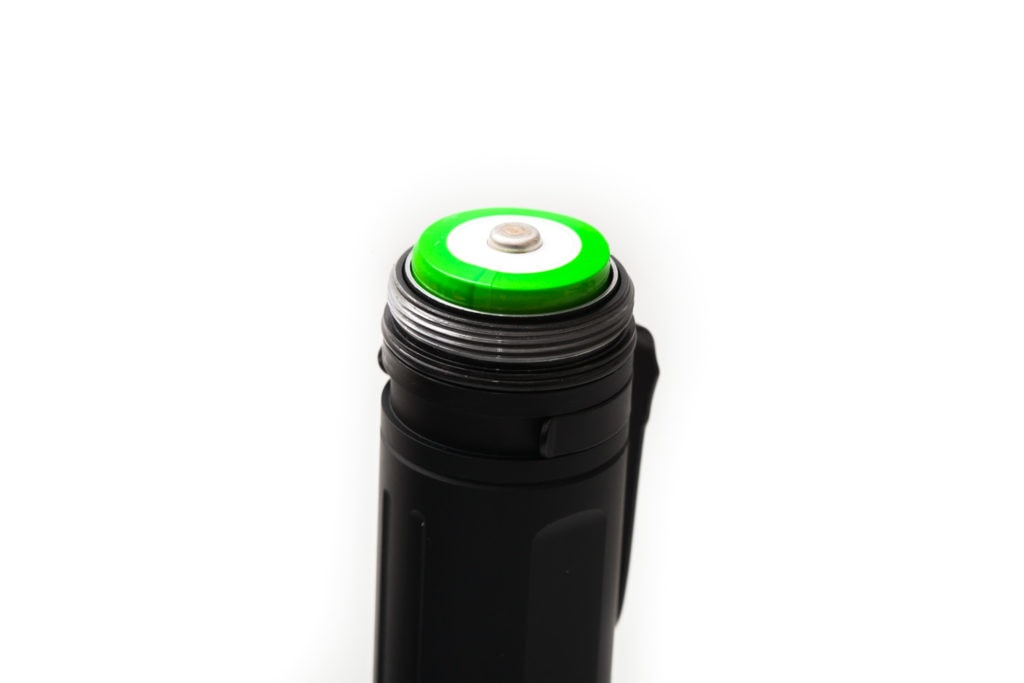
LEP, Lens, Bezel, and Reflector
The NEXTORCH T20L is not an LED flashlight, but an LEP. This means that the lightsource is a laser, and not an LED. And since I can’t open the flashlight up without using force or heat, I can only peak through the front lens to see what’s inside. And yes, this looks like the typical shine-through LEP module.
One of the things that caused doubts, was the high output numbers NEXTORCH claimed. And that’s definitely interesting to note, because all the other LEP flashlights we reviewed were specced at maximum 650 lumens (Maxtoch) while 90% didn’t even reach 500 lumens. So we tested the output later on in the review, and yes, it did reach 900 lumens.
The beam profile is also like a typical LEP flashlight, and not like an LED flashlight. The center of the beam is actually pretty bright white, unlike most other LEP flashlights. The corona, however, has an ugly blue hue, just like many other shine-through LEP flashlights. And since this is very common, I can’t really count that as a major con…
At the front end is a flat, glass lens, which is protected by a thin flat stainless steel bezel. It’s probably glued because I couldn’t remove it. It’s also very thing so it’s really hard to get any grip. Stainless steel bezels aren’t only stronger, they also looks much better.
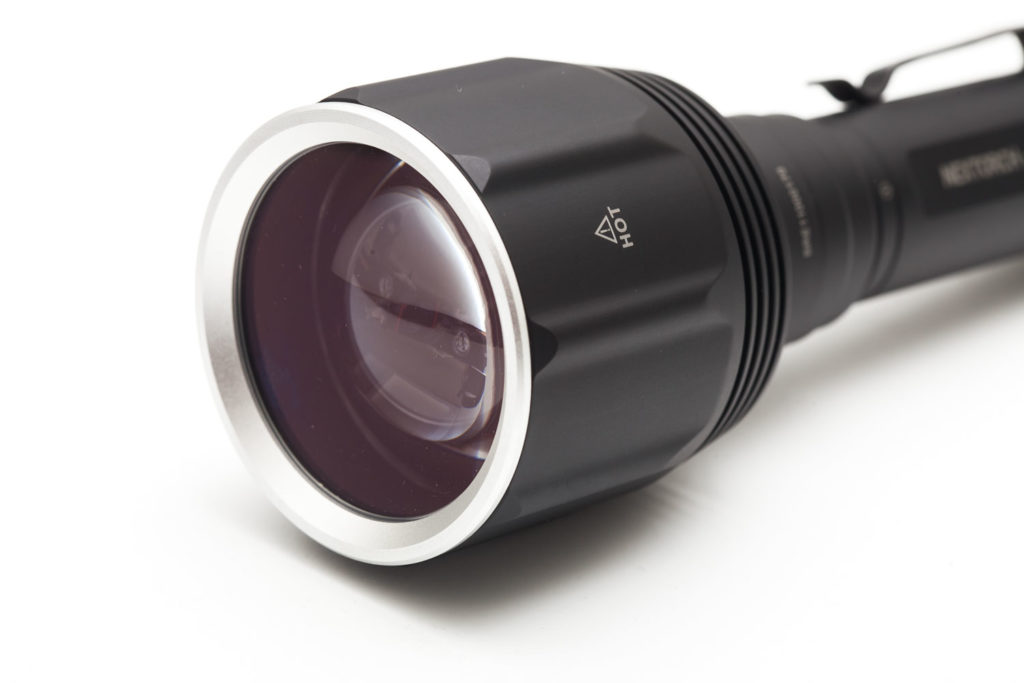
Dimensions and size comparison
- Length: 182 mm / 7 ”
- Bezel diameter: 58 mm / 2.28 ”
- Body diameter widest: 28.17 mm / 1.1 ”
Weight:
- Empty: 293.4 g / 10.35 oz
- With battery: 367.1 g / 12.95 oz
LEP Flashlight comparison
Size compared to other LEP flashlights
Group 1, NEXTORCH LEP flashlights from left to right: NEXTORCH T7L, NEXTORCH T10L, NEXTORCH T20L
Group 2: single-cell, large head LEP flashlights: 26650 LEP flashlight, Lumintop Thor 3, Maxtoch L2Ks, NEXTORCH T20L, Jetbeam M1X WP-RX, Jetbeam RRT M1X Raptor, Astrolux WP2, Astrolux WP3, Weltool W4

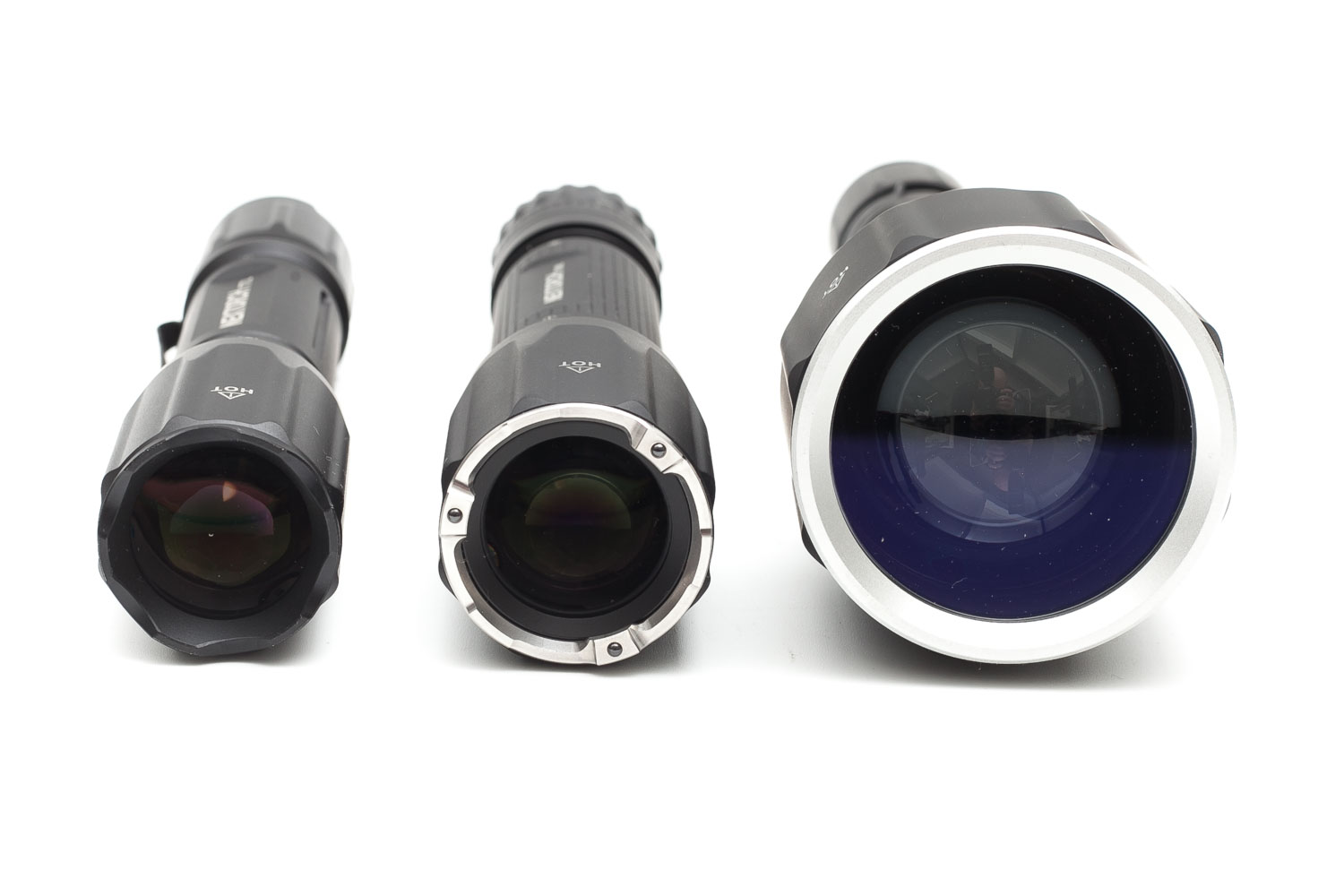

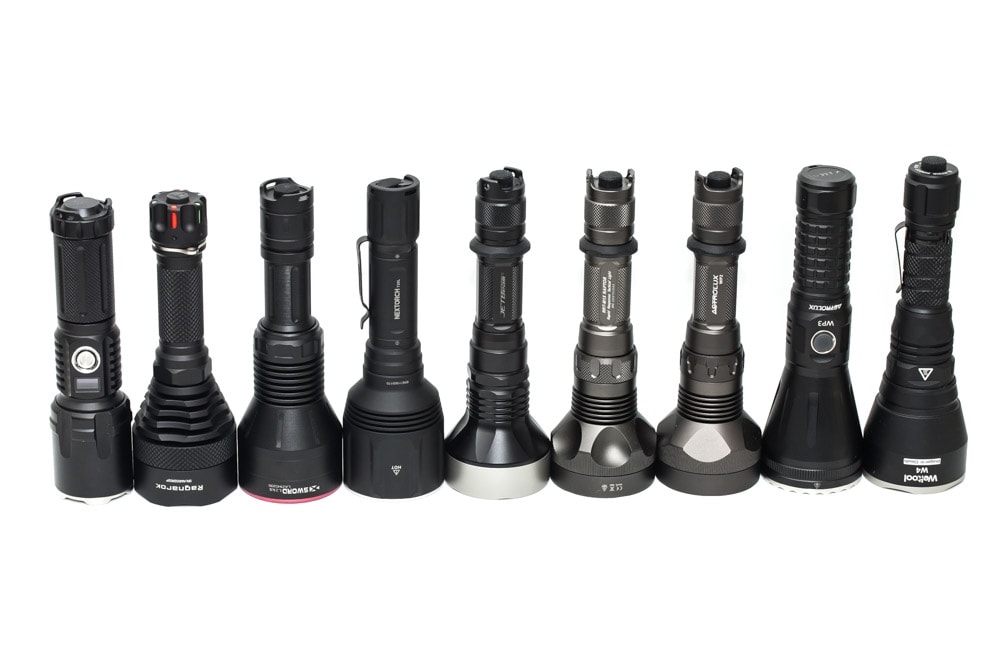
Driver & User Interface:
Although the switch behaves like a regular forward clicky switch at first sight, it’s a little more unique than that. With a normal forward-clicky switch, you can only change modes when the switch is de-activated. (Half pressing the switch will change modes). But NEXTORCH found a way around this, with a special feature. Half pressing gives you momentary mode for Turbo and Strobe. But you change modes half-pressing when the light is activated, just like a reverse-clicky switch. This is impossible with a traditional forward clicky switch. So, keep this in mind when you get this light. I thought mine was broken since I couldn’t get it in Medium or Low mode anymore. But then realized that you can only change modes when activated. lol
Available modes:
- Low, Medium, High, Strobe, SOS
From OFF:
- Half-press: High (momentary on)
- Single-click: High mode (continously)
- Double press: Strobe
- Double click: N/A
From ON:
- Half-press: Cycle through the menu from High, Medium, Low, Strobe, High, Medium, Low, Strobe etc.
- Single-click: Off
- Press and hold 3sec: SOS
Shortcuts:
- To High: always starts in high (also half press is high)
- To Strobe: double press from off
Mode memory:
- No, always starts in High
Blinky modes menu:
- Yes, strobe (double press, or the 4th mode in the main menu)
Lock-out mode:
- Just unscrew the tailcap slightly
PWM:
- Not visible by eye
Batteries & Charging
Even though the package had a dedicated place in the molded plastic carrier to hold a battery, mine arrived loaded in the light. So, before you say yours is broken, turn the battery around! Yes, with the positive terminal towards the tailcap. It’s loaded in the reversed direction, so that means the flashlight has built-in reverse polarity protection. How do I know? Because I tried to activate the light multiple times with the battery inserted the wrong way. I mean, it was inserted the ‘usual’ way, but not the correct way. Insert the battery with the positive terminal towards the tailcap!
I only found out when I saw the + and – symbols printed on the side of the battery tube. Just like I got thrown off by the ‘forward-clicky switch’, I got thrown off by this as well.
The battery included is a NEXTORCH 21700 lithium-ion battery with 4800mAh. It was fully charged upon arrival. This isn’t too common because normally they are discharged to about 3.7V for storage/shipping.
If you want to charge the battery, you need a 21700 charger with long slots. I’m using the Nitecore UMS2 for the longest cells I have, but I noticed recently that it overcharges to 4.22V. Fortunately, NEXTORCH includes a proprietary USB charging cable to charge the battery inside the flashlight. This is not your usual USB port, which is a pro and a con. Pro= it will protect for water ingress, and a con because it is not an off-the-shelf USB cable.
The charge speed is about 1.3A, and takes about 4 hours to charge.
While charging, there is a blue LED blinking, which turns solid blue when finished. It charges right to 4.2V
Unprotected, flat tops do fit, but are not recommended. The light works, but as soon as you shake or move the flashlight, the battery loses contact and the light will flicker.

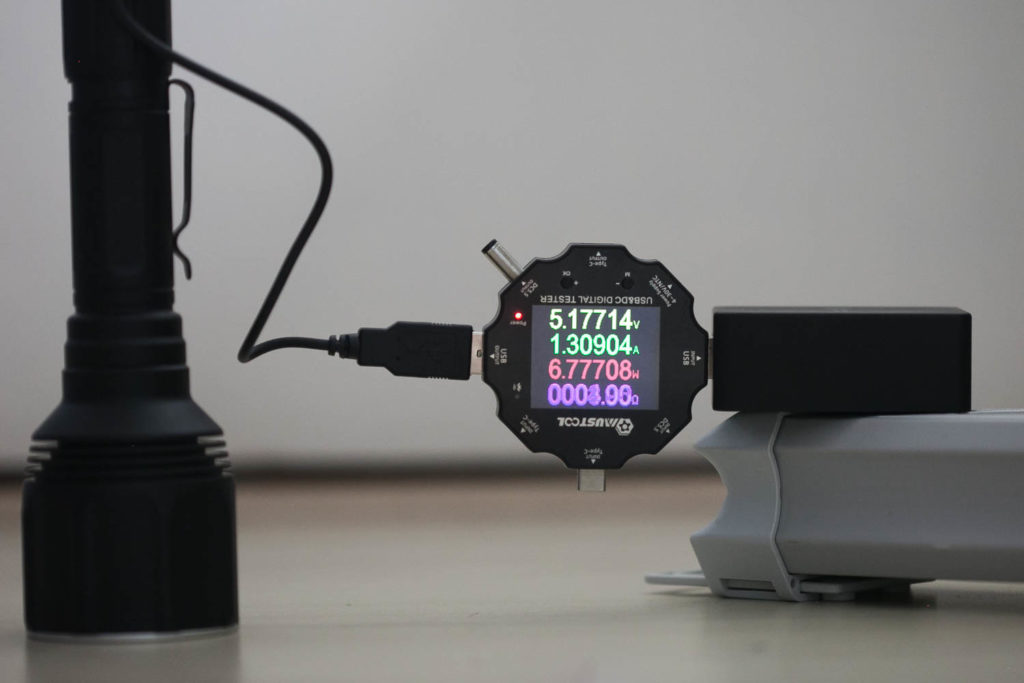
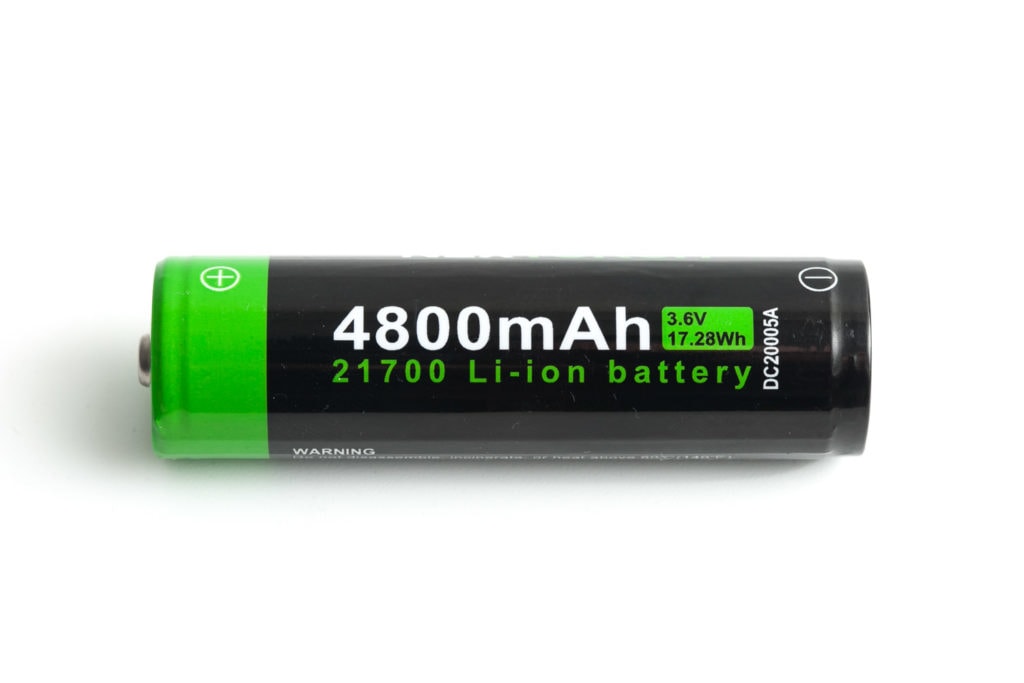
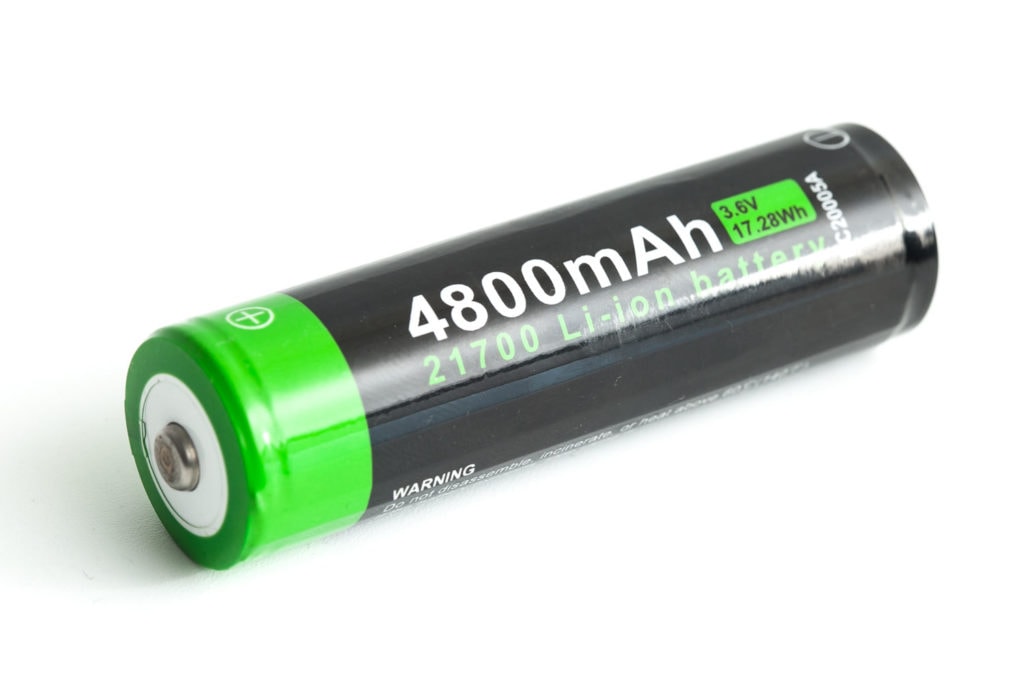
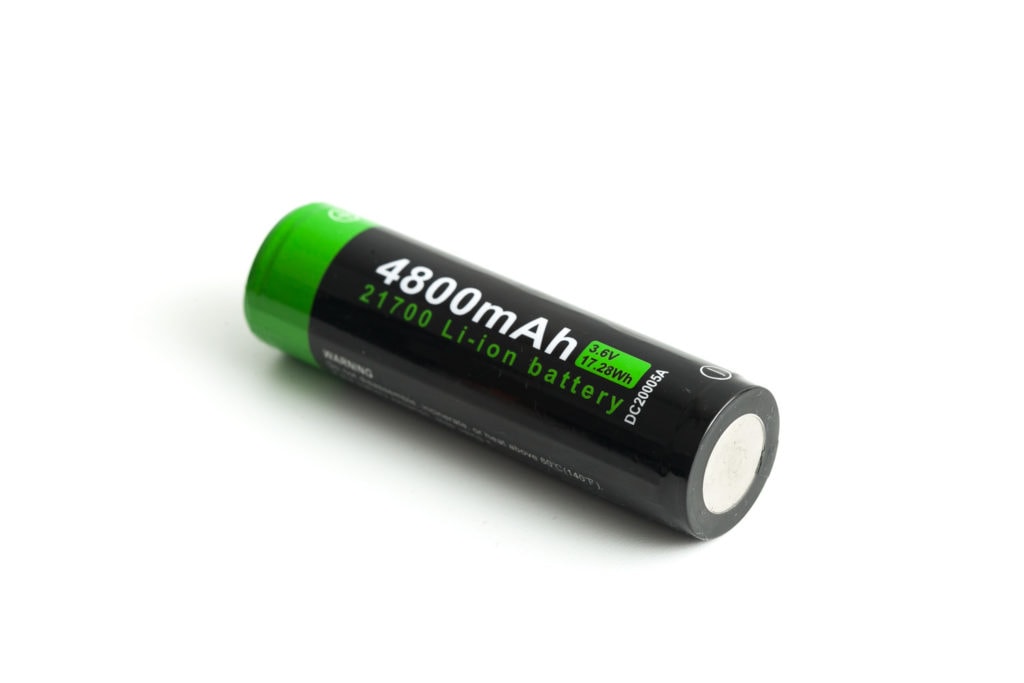
Performance
Lumen measurements:
All output numbers are relative to my homemade Integrating Sphere. It is set up with an Extech SDL400 Lux Meter for measurements including a Kenko PRO1D ND-16 filter. The base measurement is done with a Convoy S2+ that has been tested at 255 lumens.
For Amp readings, I use a Fluke 77III DMM. For higher amps I now use a Fluke 325 True RMS clamp meter. For microamps, I use a cheap DMM with an easy-to-use micro amp setting.
All of my readings were taken from a fully-charged NEXTORCH 21700 with 4800mAh.
| Mode | Specs | start | 30sec | 10min |
|---|---|---|---|---|
| Low | 55 | 68 | 68 | 64 |
| Med | 232 | 249 | 249 | 142 |
| High | 900 lm | 981 lm | 975 lm | 286 lm |
So yes, it easily reached 900+ lumens.
Runtime:
The runtime test was done with the 50cm integrating sphere, including the Kenko Pro1D ND-16 filter and Extech SDL400 data logging Lux Meter.

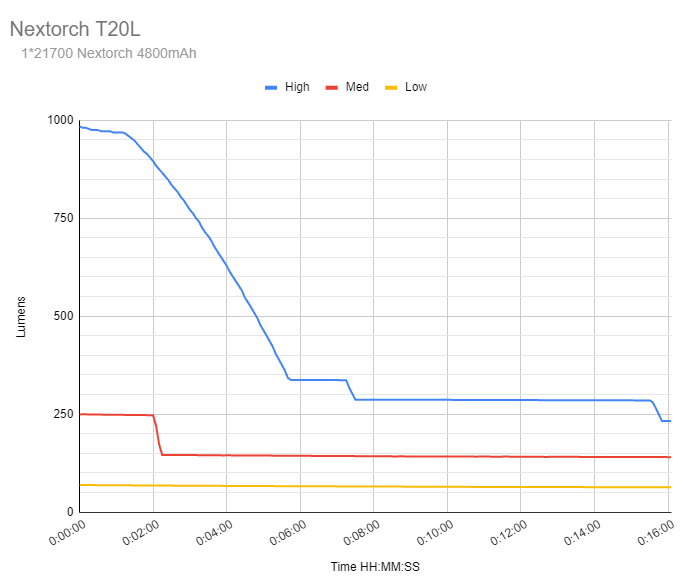
High mode started off at around 981 lumens and maintains that for about 1 minute and 20 seconds at which points the output starts dropping to 337 lumens at 5 minutes and 45 seconds. The next drop is from 7minutes and 15 seconds down to 285 lumens. At 15 minutes and 35 seconds the next drop is to roughly 230 lumens. The light maintains this output till it turns off at 2 hours and 36 minutes. You see a few more spikes, because those were kind of short blinks of light. (Specs: 2 hours)
Medium starts at around 250 lumens, and drops to 140 lumens after 2 minutes. It sustains this output till it turns off at the 4 hours and 6 minutes mark. (Specs: 4 hours)
Low starts at around 67 lumens and slowly drops to about 58 lumens and sustains that till it turns off after 5 hours and 55 minutes. (Specs: 6 hours) It’s interesting to note that the battery was at around 3.21V when this runtime test finished.
Throw Measurement
Measurements were taken both indoors and outdoors with a professional Hagner E4-X Lux Meter.
| Mode | Specs | Candela measured | Meters | Yards |
|---|---|---|---|---|
| Low | 70,225 | 88,000 | 593 | 649 |
| Med | 275,625 | 336,000 | 1159 | 1268 |
| High | 1,000,000 | 1,284,000 cd | 2266 | 2478 |
My copy performed quite a bit better than specced, both in terms of output and candelas.
Candela comparison: best single-cell large head LEP flashlights
A list of the best single-cell LEP flashlights with large heads we reviewed: These numbers are NOT from the specifications but are measured by our reviewers. They include all single-cell LEP flashlights with large heard (+-60mm and above). The numbers include the measurement in lumens (lm), measure candela (cd), and calculated distance in meters, and yards. These numbers are all measured 30 seconds after turning on.
| Flashlight (click for review) | @30sec (lm) | Candela (cd) | Meters | Yards |
|---|---|---|---|---|
| Acebeam W30 | 498 | 1,312,000 | 2291 | 2505 |
| Acebeam W35 | 733 | 1,892,000 | 2751 | 3009 |
| Amutorch BT60 | 316 | 1,644,000 | 2564 | 2804 |
| Astrolux WP2 | 303 | 1,248,000 | 2234 | 2443 |
| Astrolux WP3 | 445 | 2,412,000 | 3106 | 3397 |
| FireFlyLite LEP01 | 391 | 816,000 | 1807 | 1976 |
| Jetbeam M1X WP-RX | 491 | 2,280,000 | 3020 | 3302 |
| Lumintop Thor 3 | 311 | 1,728,000 | 2629 | 2875 |
| Maxtoch L2KS | 442 | 2,308,000 | 3038 | 3323 |
| Nextorch T20L | 975 | 1,284,000 | 2266 | 2478 |
| NlightD L1 | 513 | 1,940,000 | 2786 | 3046 |
| Weltool W4 | 450 | 2,184,000 | 2956 | 3232 |
| Weltool W4 PRO | 550 | 2,808,000 | 3351 | 3665 |
And below is an interactive throw comparison graph (candela), between the best single-cell LEP flashlights with large heads. Hover your mouse over the interactive graph below to see the details of each specific light.
(tip: hold your mobile phone horizontally to see the full graph). Or visit the full interactive graph here.
The next graph shows the same graph, but then focusing on the first 60 minutes of their runtimes. Or view the full 60min interactive graph here.
Beamshots
For the following beamshots I used a Canon EOS 5D Mk2 and a 100mm lens. manual settings: ISO1600, .5sec , F4, 5000K
The first tower is 650 meters / 710 yards away, the second tower is about 450 meters / 492 yards away.
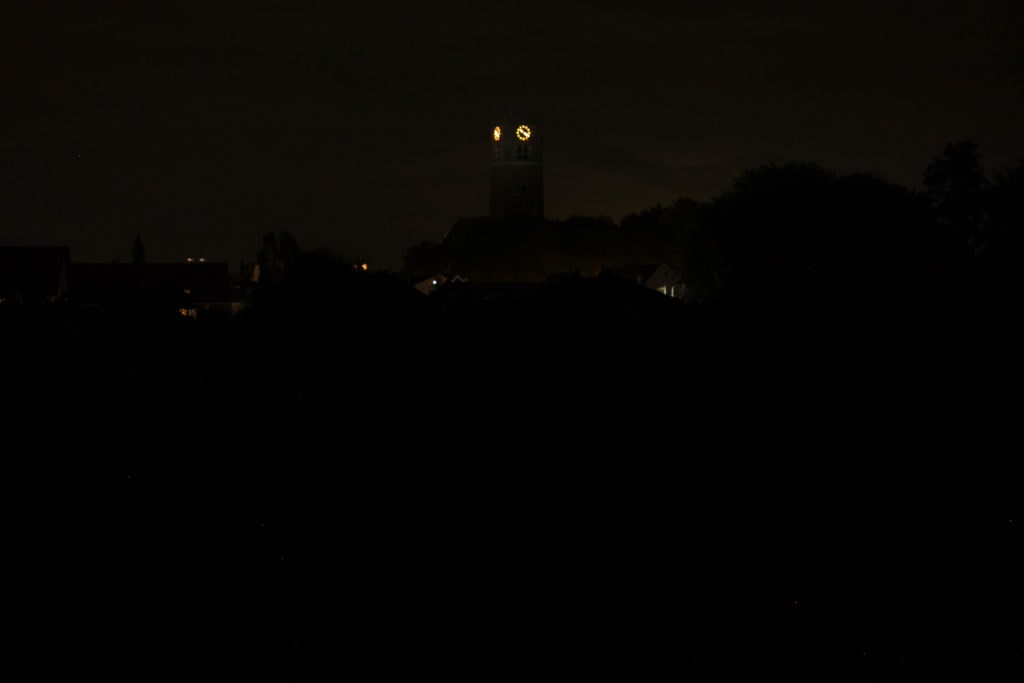
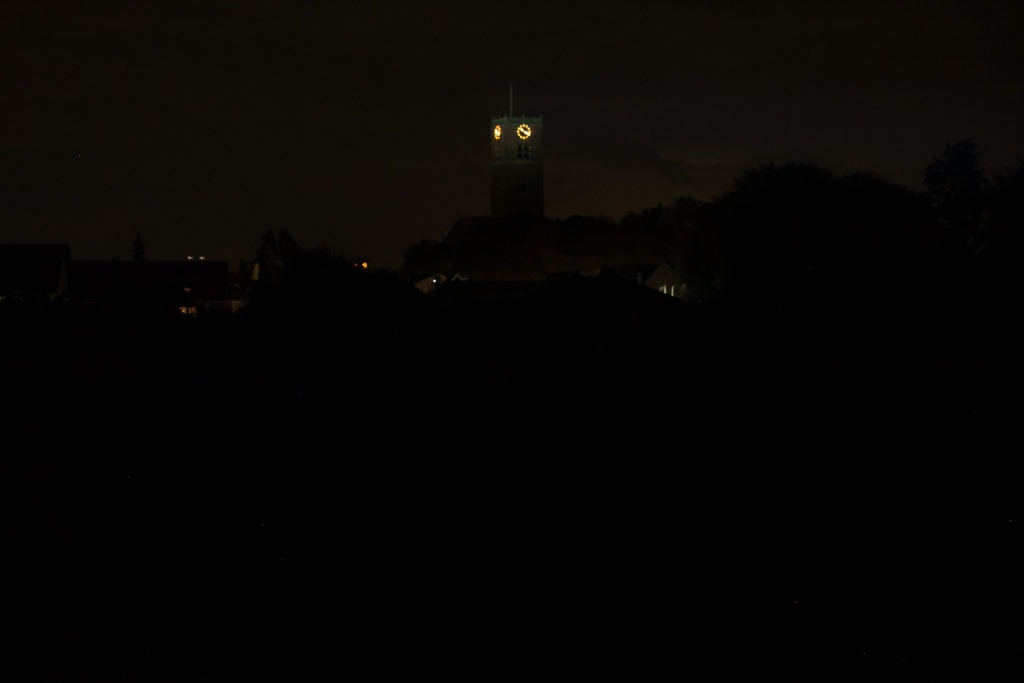
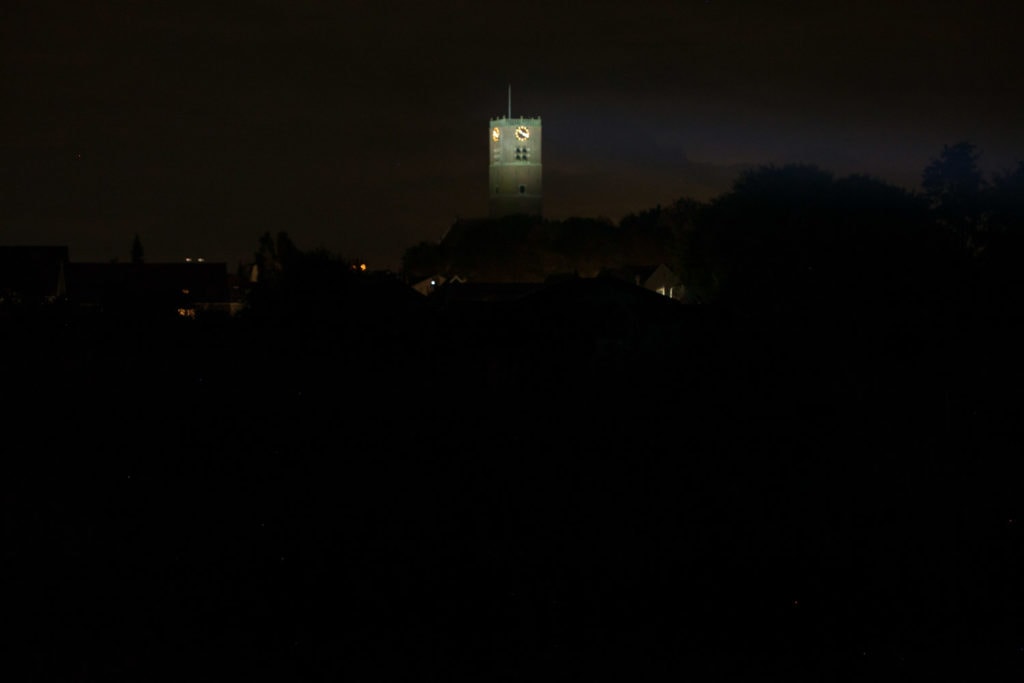
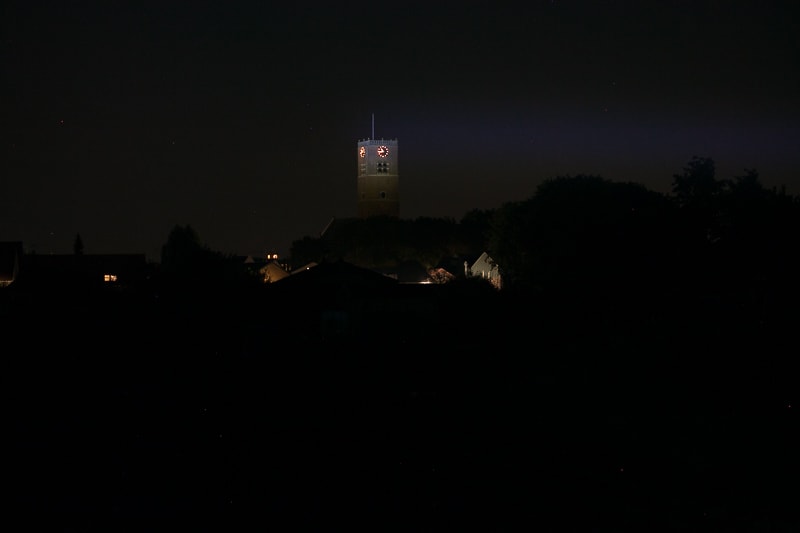
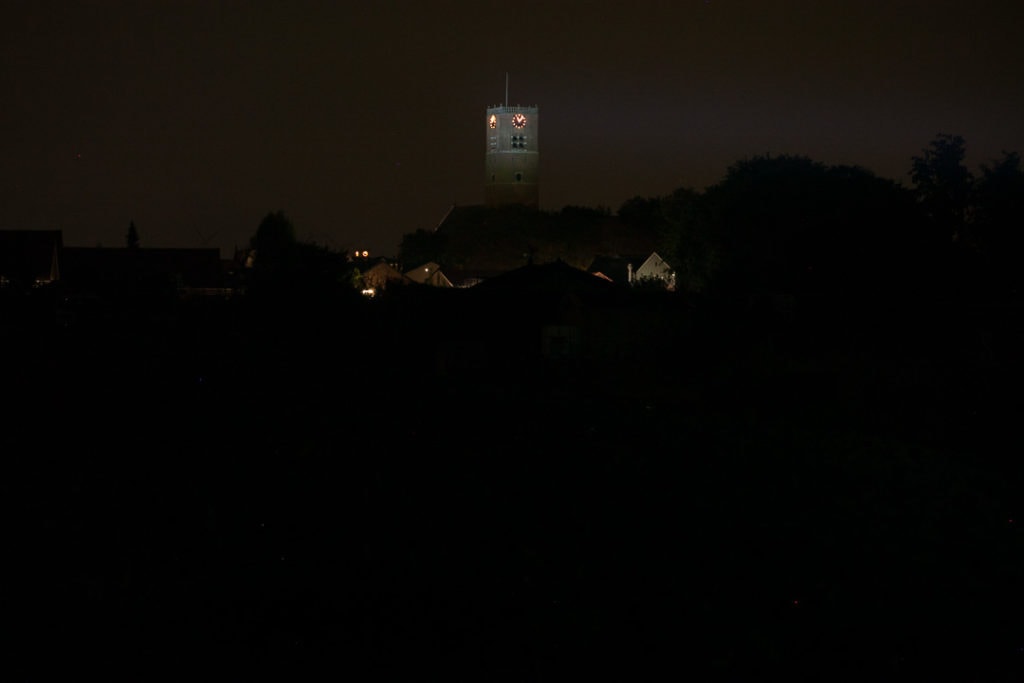

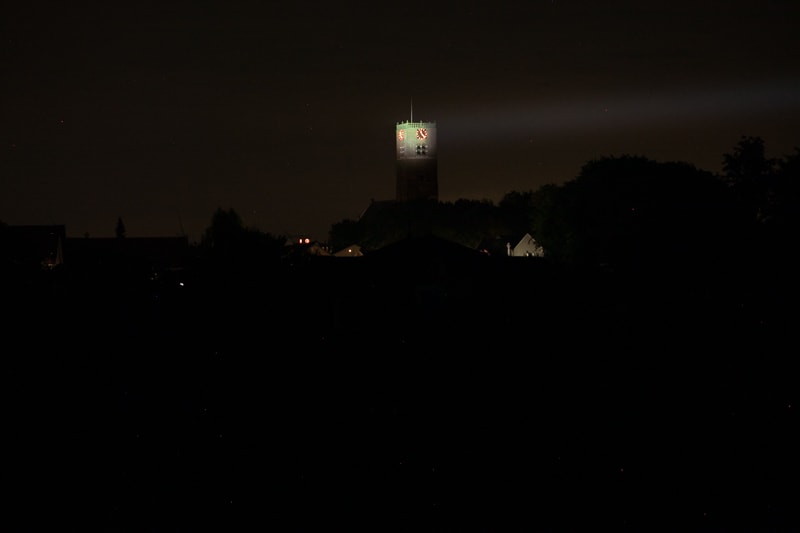
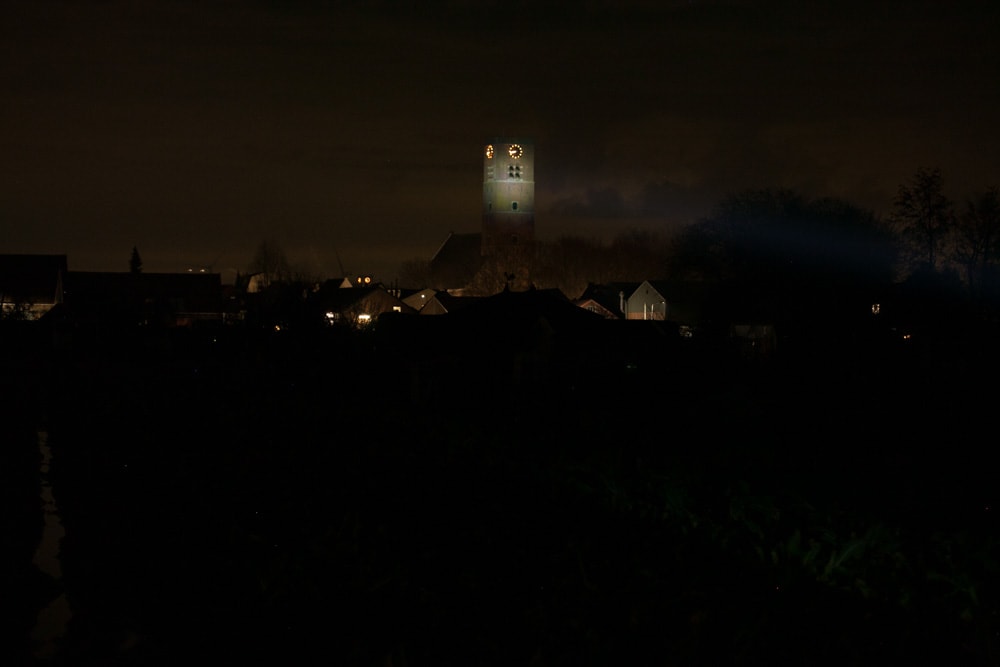
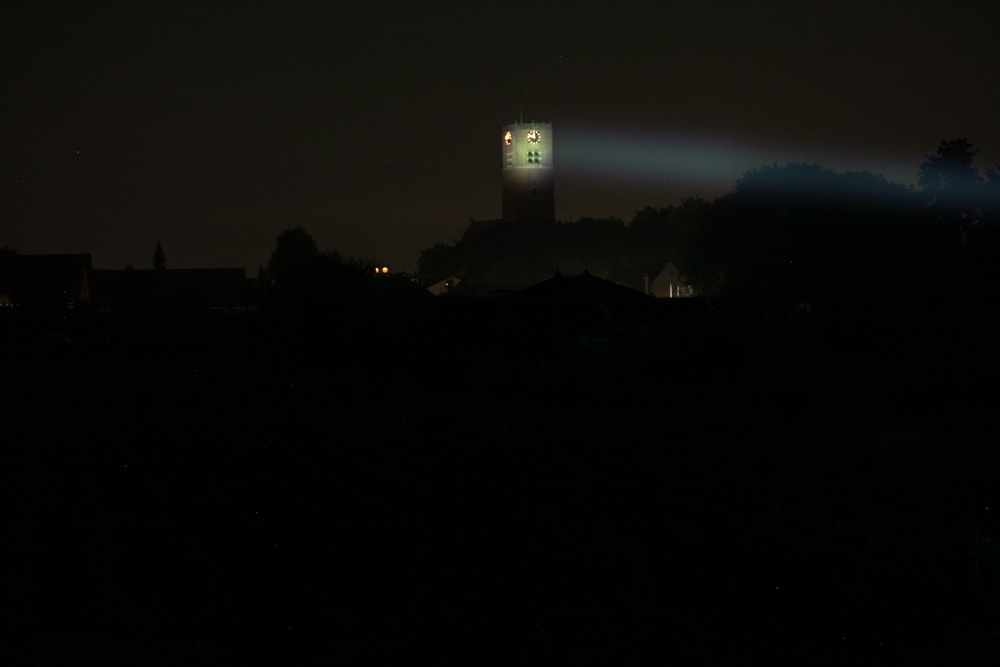
Disclaimer: This flashlight was sent to me for review at no cost by NEXTORCH . I have not been paid to review, nor have I been holding back on problems or defects.
Final Verdict
Pros
- Never seen such high output on any LEP
- High build quality and finish
- Stainless steel bezel
- Protective glass lens
- Ready-to-go with battery and charging cable
Cons
- Doesn’t maintain high output/throw
- Battery is reversed
Explanation on star ratings:
1: Avoid: my phone flashlight would be a better choice – 2: Poor: significant defect or issues, much better options available at the same price – 3: Average: some defects or issues – 4: Good: recommended (minor issues) – 5: Great: highly recommended

4 stars: ★★★★
I already expected a high-quality flashlight with a great fit and finish, and the T20L didn’t disappoint. It looks and feels really good, and the output is pretty spectacular for an LEP flashlight. The sustained output and throw, however, aren’t that spectacular compared to its competitors.
Buy NEXTORCH T20L with a discount
Get 10% off at NEXTORCH using our exclusive discount code: 1lumen10
1lumen selects and reviews products personally. We may earn affiliate commissions through our links, which help support our testing.